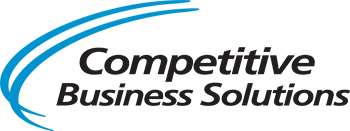Continuous Improvement and Process Optimization
Overview
When one of our clients recognized just how much rising inefficiencies were affecting their business processes, they reached out to the CBS experts for help. In just a matter of months, the results speak for themselves: a significant bump in all relevant KPIs, with several areas improving as much as 93%.
Here’s a quick look at how we accomplished this together.
To start, we conducted a business process map of their Quote to Cash process, with an eye on enhancement at every step. During this review, we examined 12 critical functional processes and uncovered 147 issues. These inefficiencies cost the company an estimated 63,398 hours annually across several departments, including Inside Sales, Credit, Accounting, Operations, and Purchasing. Understanding that the client lacked the internal capacity to tackle these issues alone, we embedded a CBS resource to work closely with their team.
Together in the trenches, we developed and executed the Continuous Improvement (CI) Roadmap developed during the business process mapping excess. Over the next 11 months, we carried out numerous CI activities aimed at addressing and resolving the identified problems. Through this collaborative effort, we helped the client streamline their operations, paving the way for greater efficiency and success.
The Challenge
This client was struggling with significant inefficiencies in their Quote to Cash process, which led to wasted hours and decreased productivity across various departments. Sales teams were spending too much time on manual quote generation, while the finance department was bogged down by errors in billing and payment collection. The lack of a streamlined process caused delays in order fulfillment and ultimately impacted customer satisfaction. Recognizing the need for improvement, the client sought a structured approach to identify, prioritize, and resolve these issues to optimize their operations, enhance productivity, and improve overall business performance.
The Approach
To tackle the inefficiencies, we developed a comprehensive strategy that included a mix of Kaizen events, IT automation, process updates, and other immediate actions. To start, the Kaizen events brought together employees at all levels to brainstorm and implement CI initiatives. Simultaneously, IT automation was introduced to handle repetitive tasks, freeing up valuable human resources for more complex activities. The process updates were meticulously planned and executed, targeting specific bottlenecks and pain points within the workflow. Other immediate actions, such as retraining staff and optimizing resource allocation, complemented these efforts. The primary goals of these activities were to reduce rework hours, streamline operations, and enhance overall productivity. Over time, these changes not only addressed the existing inefficiencies but also built a more resilient and efficient operational framework for the future.
Results
Here are the results of our work together, broken out by Kaizen events with time savings, additional implementations, and a snapshot of metrics impacted by CI activities.
Metrics Impacted Through CI Activities
| Business Metric | Unit of Measure | Baseline/ JOP | 180-day | Improvement |
| Weekly Cash Requirements Processing Time | Hours | 9 | 4 | 56% |
| Purchasing Defects per Month | EA | 28 | 2 | 93% |
| Purchasing Rework Hours per Month | Hours | 72 | 5 | 93% |
| Delayed Vendor Payments/week | EA | 85 | 45 | 47% |
| Accounting Rework Hours per week | HR | 66 | 35 | 47% |
| % of Quotes Followed UP Manual | % | 59% | 92% | 56% |
| # of Open Items in AP Portal | EA | 1,631 | 326 | 80% |
| AP Portal items-Avg Days Aged (based on load date) | Days | 62 | 33.17 | 46% |
Additional Activities–Complete or In-Process:
- Consolidated storefront and hose manufacturing line and two additional sites to develop flagship facilities that utilize a lean execution system.
- Created a roadmap to introduce/build a Quality Management System based on ISO9001.
- Launched a Continuous Improvement Steering Committee to monitor and drive CI activities across the organization.
- Organized workshops to establish Business Development / Engineered Solutions strategy and Combustion Center of Excellence Roadmap.
- Created organization-wide tracking of daily interruptions to identify and prioritize structured problem-solving efforts.
Though the work continues, to date the team has saved over 22,000 hours which is equivalent to 11 FTE in the first 180 days.
Conclusion
By focusing on continuous improvement, the client saved a significant amount of time and boosted overall business efficiency. They saw a notable drop in purchasing defects and rework hours, vendor payment delays decreased, and their overall responsiveness improved. Now, they have a more open culture where employees actively participate and share ideas for further improvements. This approach has paved the way for sustained growth and efficiency–and shows, again, the power of having a team of experts in the trenches with you, ensuring that short-term adjustments lead to long-term transformation.
Join our community.
Sign up now to receive future news.
